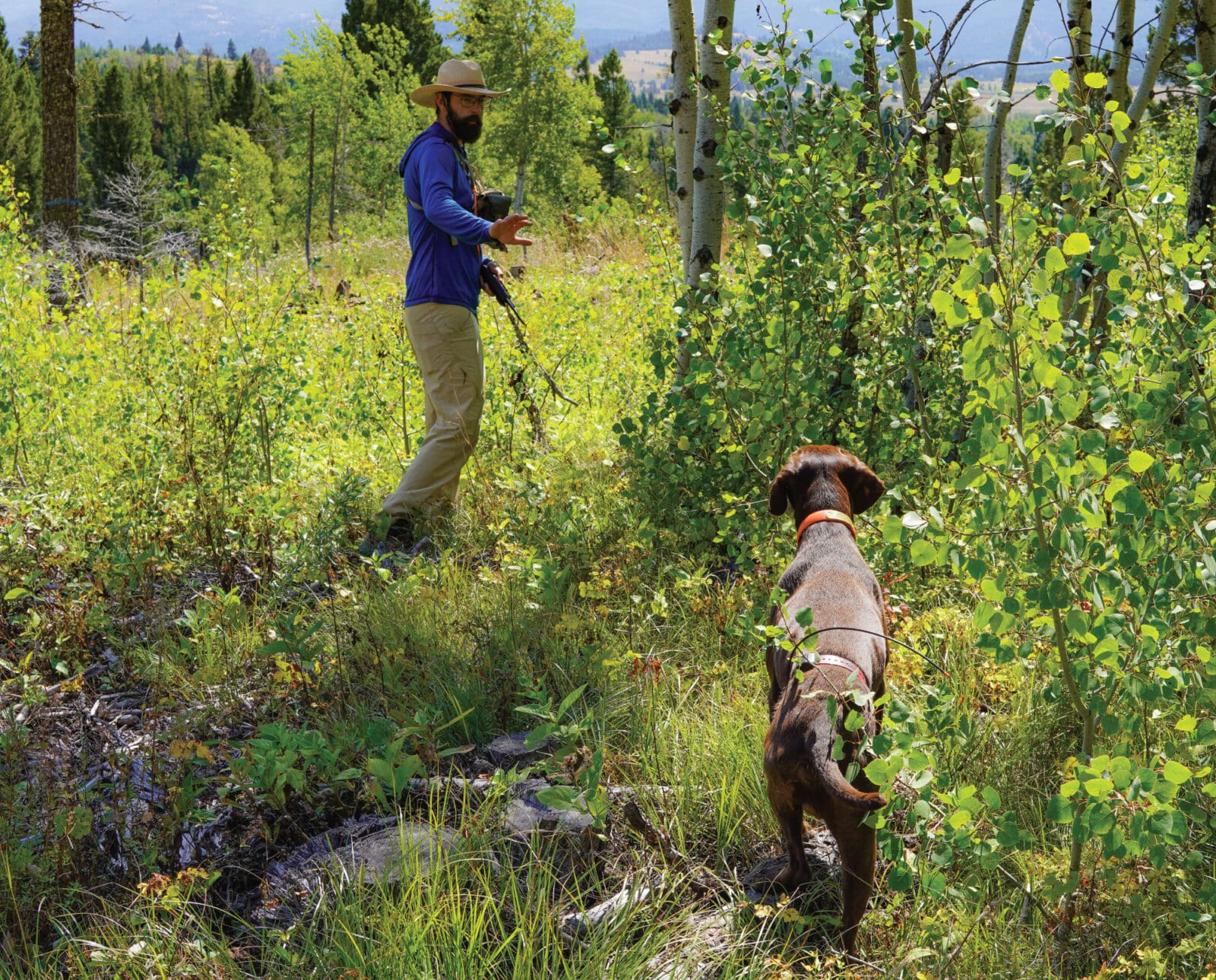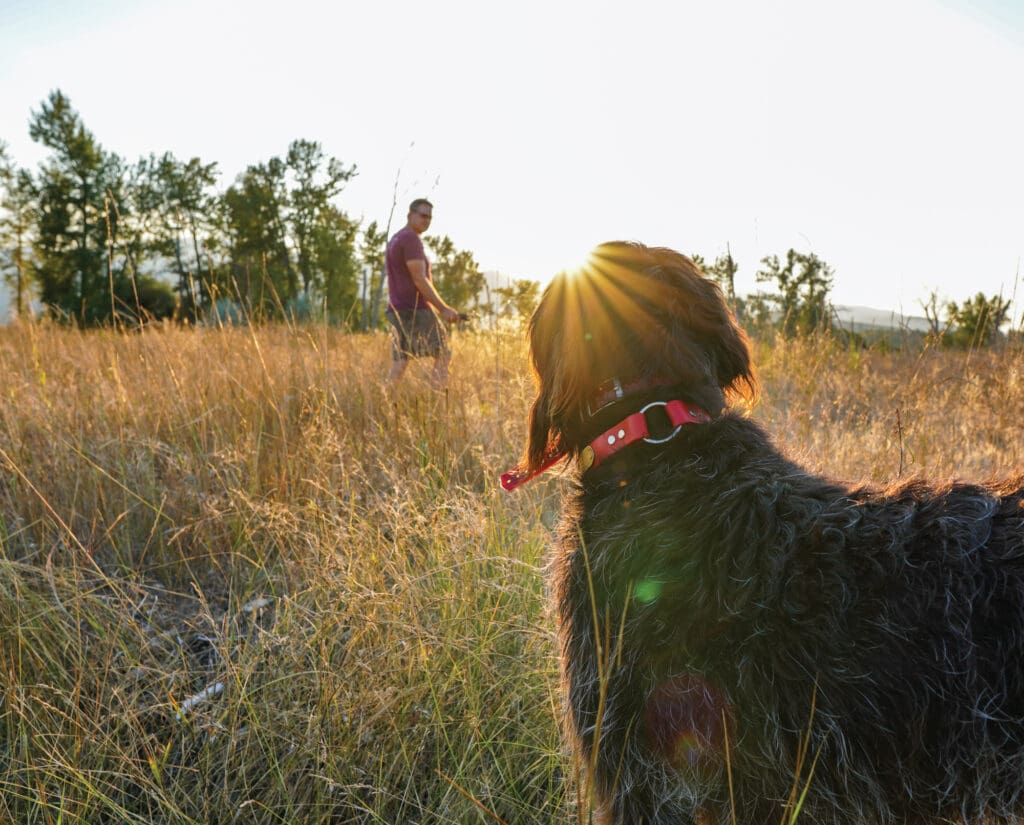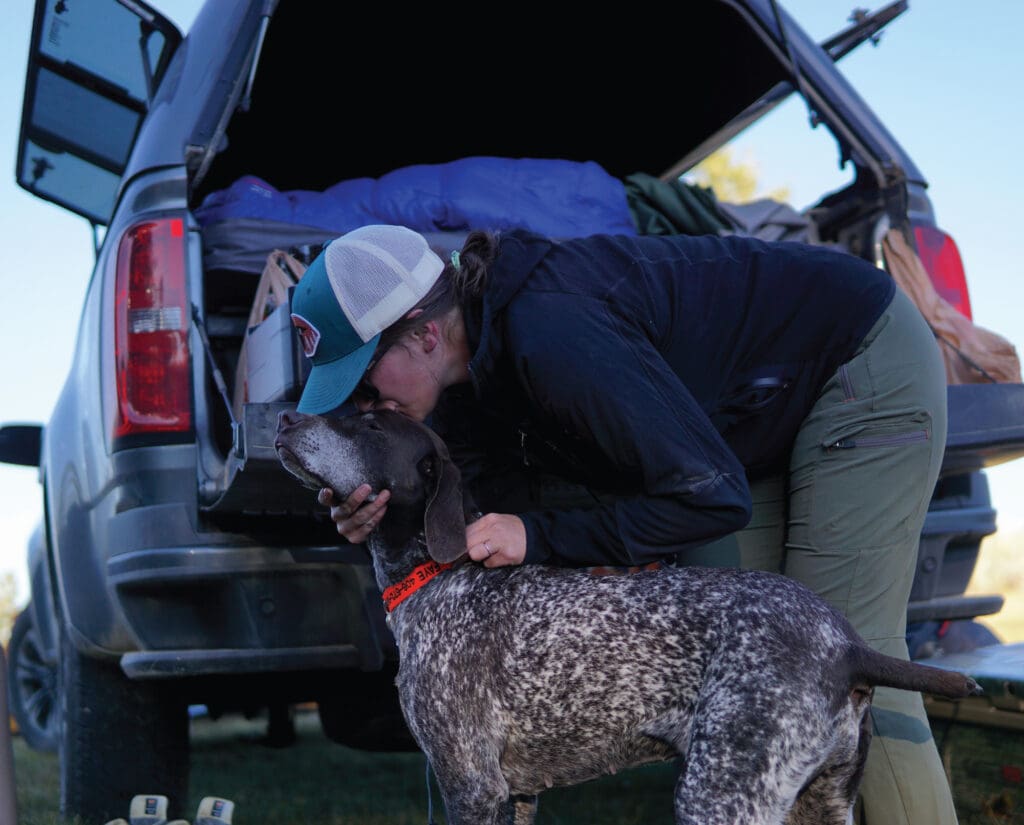Home » Hunting Dogs » Montana’s Bird Dog Training Regulations: Balancing Ethics and Impact on Wild Birds
Montana’s Bird Dog Training Regulations: Balancing Ethics and Impact on Wild Birds

Hannah Nikonow grew up a big game hunter in Wyoming’s…
Montana’s new regulations for training dogs on wild birds call for more than enforcing an additional license and season of use.
I’m finishing this story on the eve of Montana’s 2023 bird opener, and I’m feeling very strange about the birds I’m about to start chasing. Over the past month, I’ve had dozens of conversations with some of the most passionate bird hunters and dog trainers about Senate Bill 280, Montana’s new bird dog training regulation. In summary, many believe this is an important regulation to get on the books, but it has a lot of downfalls and unforeseen impacts.
Listen to more articles on Apple | Google | Spotify | Audible
At the root of this new regulation is an attempt to manage the different values people have when it comes to wild birds. For some, training dogs on wild birds is a part of their business. For others, well-trained bird dogs mean bag limits and a snap for the ‘gram. For many, it’s about the experience of a place and sharing it with the birds, the dogs, and the people. Every one of these activities has a negative impact or some measurable form of take. But every bird hunter and dog handler is left to decide how to moderate their impact and live within their private code of ethics. As we enter the most glorious time of year, I hope you also dwell on your code of ethics.
Montana Senate Bill 280: Establishing a Bird Dog Training Law
Attempts to restrict people from training their dogs on wild birds in Montana have arisen numerous times. However, these efforts have mostly failed. The most recent attempt resulted in the passage of a new regulation that stemmed from the 2023 state legislative session. Senate Bill 280 directed Montana Fish, Wildlife and Parks (FWP) to establish a license and set a season to regulate the training of bird dogs on wild bird populations before hunting season starts.
When Montana’s wildlife commissioners met to address what the legislature required them to establish, a cover sheet was provided by FWP staff. It stated, “The age of broods when dog training begins may be important. Other ground-nesting birds and waterfowl typically nest and raise broods during similar time frames and are subject to similar disruptions. Broods six to eight weeks old had higher survival when disturbed than broods half that age. Frequency of training on the same brood in a relatively small area may also influence chick survival.”
FWP’s commissioners crafted a two-part regulation establishing a season during which this type of training is permitted and a license to do so. The license applies to training on birds not raised in captivity on both public and private land. It costs $5 for residents and $10 for non-residents. The training season opens August 1 for residents and August 15 for non-residents and ends March 31 for all. These season dates only apply for training on wild birds on public lands, so training on wild birds on private lands is permitted outside this season, but a license is still required.
Between July 3 and September 1 of 2023, FWP reported that 280 bird dog training licenses were sold. Montana residents purchased 201 licenses, and non-residents bought 79. FWP will contact those who purchased the dog training license to ask questions about how, where, and when they train to determine what is needed to inform any regulation decisions by the commission before the 2024 training season.
“We are trying to better understand what’s happening in the world of dog training to know where the impacts are and where they aren’t,” said Quentin Kujala, FWP Chief of Conservation Policy.

Impacts and Enforcement of Montana’s New Dog Training Regulation
Unfortunately, little published science looks into the impact of training pressure on wild bird survival and fitness. Yet, every time a bird flushes, that bird expends calories. Repeated flushes exhaust young birds, disturb nesting hens, and disperse birds (which makes them more susceptible to predation). Damaged nests and eggs also impact the health of the birds we pursue come hunting season. These impacts can be negated when quiet periods are adhered to within defensible time spans that biologists and researchers determine to be most beneficial.
Jeff Herbert worked for FWP for 34 years, spending a good part of that time as the migratory and upland game bird coordinator. Later, he was the chief of wildlife research. He said he’s closely watched the growing popularity of upland bird hunting in Montana. Herbert is alarmed by the recent influx of professional trainers and amateur hunting dog owners in eastern Montana to train on public lands before hunting season.
“The commercialization of this pastime scares me,” Herbert said. “My primary concern is that people are coming in with big strings of dogs and thus increasing the intensity of use in concentrated areas. This happens where there’s good habitat, the presence of wild birds in decent numbers, and publicly accessible land. It’s a perfect storm that helped produce this new regulation. It’s also resulting in unintended consequences.”
Herbert said this new regulation could put more pressure on individual birds during the most sensitive times in their life cycle, particularly during the late brood-rearing period of late summer. He also thinks that the enforcement of this regulation is going to be an issue.
“The enforcement is going to be really hard because of how few wardens there are to cover such large regions with lots of other demands on their time,” he said.
Regarding law enforcement, FWP’s Kujala said this is now a part of the suite of tasks that wardens are assigned to manage. Still, in this first year of implementation, FWP approaches this regulation with an education-first perspective.
“We are looking to get more substance to this conversation and, in doing so, we want to learn if we need to put a little bit more certainty into the management of dog training on wild birds,” Kujala said.

Social Impacts of Dog Training in Montana
“Those of us that live alongside these birds and have hunted them for decades know how hard survival is,” said Trent Kleppen, Chair of the Upland Game Bird Enhancement Program Advisory Council. The appointed group comprises hunting, conservation, and business community members who advise FWP on upland game bird topics, such as regulations and habitat management. “On the Montana prairie, the winters are brutal, the spring can be disastrous, the summers broil, but the fall is glorious, so that’s all a visiting hunter sees.”
Kleppen said there had been bird dog training outfits in northeast Montana for decades, but they seem to be showing up earlier each year and staying longer. Starting in early July, locals are accustomed to seeing tricked-out training rigs with loaded dog boxes and long lines of staked-out dogs in campgrounds.
“This new regulation was targeted for people who are abusing the system, but it may have accidentally sent out a mass invite to a lot more people encouraging them to participate in impacting bird populations prior to the hunting season for a nominal fee,” he said.
Neighboring states like North Dakota and others implemented dog training restrictions years ago and with higher fees, established permits and fines, and generally more awareness about the practice. As other states increase their management of dog training it inevitably causes this type of pressure on a natural resource to move elsewhere with less restrictions.
For a good part of the summer and most of the fall, one person who sees the impact of this pressure and what this new training regulation is meant to curtail is Alycia Nathe. As a farmer and rancher in northeastern Montana, she said she and her neighbors didn’t initially understand what was happening years ago when trucks with out-of-state plates showed up with dog trailers and horses in July.
“They started camping out on land we lease to graze, and their timing coincided with our breeding season,” Nathe said. “They would run their dogs on horseback through our cattle, and by the end of summer, the cows got really wild. They were reactive to our working dogs and dangerous to us.”
Nathe hasn’t seen a difference in human behavior with the new bird dog training regulations this year. Still, she said it hasn’t been communicated sufficiently and hopes it will have positive results in the future. One thing she emphasized that can have the most impact on rural communities and their surrounding natural resources is that hunters need to be more respectful of the places they are visiting.
“Montana’s tagline of ‘last-best-place’ leads to newcomers treating our state like the wild West where anything goes,” Nathe said. “Well, it doesn’t. You’ve just got to slow down and help care for what we all love.”
Additional Considerations for Protecting Montana’s Wild Birds
Another person who thinks deeply about animal husbandry and makes a living off critters that are raised alongside wild birds is John Mciltrot. As a professional trainer in Montana who runs dogs from horseback, Mciltrot supports most aspects of this two-part regulation but thinks it won’t result in the information FWP needs.
“I think the number of pro trainers actually using wild birds for summer training is relatively small,” he said. “What we really need to protect our native birds is more information on how populations are doing across the state paired with how many trainers are actually coming here to practice this type of training along with where they are going to do it.”
Mciltrot suggests that this new regulation isn’t going to inform much, and there are other ways to manage social impacts on wild birds. Shortening the seasons on species like sharptail grouse, raising license costs, and establishing windows in which non-residents must select the weeks they bird hunt rather than have access to an entire season are all options proposed by the Montana legislature and various interest groups.
“I want the game and fish department to be making decisions and basing our regulations on documented events and other significant occurrences, not a few stories from a few people,” he said.
One theme that Mciltrot maintains throughout his training practices is treating his dogs and horses with fairness to result in the behavior he wants. He said this also applies to wildlife.
“Chasing a fragmented covey around isn’t good or fair for the birds or my dogs. If a dog moves a young sage grouse four times on a 90-degree day, that’s the last thing a dog trainer wants to do. It’s poor training for the dog and could kill that bird,” he said.
Practice Your Code of Ethics In The Field
I find myself returning again and again to the concept of respecting a place and all its inhabitants. Pro and amateur trainers repeatedly pounding OnX-pinned coveys with green dogs or a game agency’s ability to make people take it easy on vulnerable birds are an aside to a more significant issue.
Hunters’ personal codes of ethics and behavior heavily impact a place far beyond the birds taken from it.
Game and fish agencies can only regulate hunter behavior so far. Much of this comes down to our behavior when the law or social media’s keyboard critics aren’t looking. A.J. Derosa, Project Upland’s Creative Director, wrote an article about the ethics of bag limits that explores this concept beautifully. We can restrain our behavior more than what regulations demand of us.
Optional behavioral restraints already exist within hunting culture. Uplanders decry the ground swatting of any bird. Duck hunters strive never to shoot a hen mallard. Turkey hunters refrain from blasting gobblers out of roost trees. Increasing numbers of hunters choose non-lead ammunition.
Our evolutions as hunters are all unique. We must encourage our fellow hunters and be role models depicting greater respect for every element of the places we hunt.
“At the very least, this new season and license may help folks think about their behavior,” Kleppen said. “Wild bird populations, especially those existing on publicly accessible ground, can be a fragile, delicate thing. It seems odd that anyone enthusiastically involved in the upland game bird realm wouldn’t be ready to err on the side of caution to protect the resource.”
Hannah Nikonow grew up a big game hunter in Wyoming’s sagebrush sea and became an adult-onset upland hunter in her early 20s. She has the great fortune of living in western Montana with a pack of bearded men (which includes her husband, a Wirehaired Pointing Griffon and a Pudelpointer). Professionally and personally she is dedicated to enacting conservation by bringing unique voices together.



